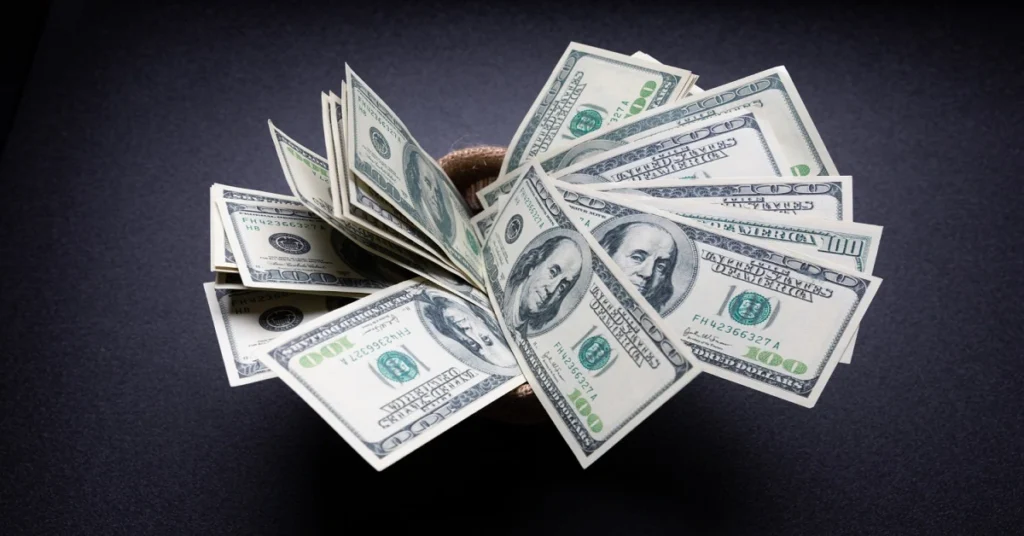
Have you ever wondered what makes the world go round when it comes to money? I mean, we all use cash, credit cards, or digital wallets daily, but have you thought about which currency is the most popular around the globe? Well, buckle up because we’re diving into a fascinating topic: the US dollar is making waves, hitting a massive 49% share of global payments while the euro is taking a bit of a hit. Let’s break it down!
The Mighty US Dollar
Imagine you’re at a big party, and everyone is trying to talk to each other. The US dollar is like that super popular person who knows everyone and can strike up a conversation in any corner of the room. The dollar isn’t just used in the United States; it’s the go-to currency for many countries around the world. When businesses want to trade, tourists want to buy souvenirs, or countries deal with each other, chances are, they’re using the dollar.
Why Is It So Popular?
- Trust: Just like how you trust your best friend to keep a secret, countries trust the US dollar. It’s stable and backed by the strong economy of the United States. When things get rocky, countries tend to flock to the dollar for safety.
- Widespread Use: Picture a huge global marketplace. The dollar is the currency that everyone recognizes and accepts. It’s like the universal remote control of money—everyone knows how to use it.
- Oil and Commodities: Many countries trade oil and other goods in dollars. When you think of oil, think of the dollar. This relationship not only facilitates international transactions but also enables nations to gain oil profit, contributing to the dollar’s sustained high demand in the global market.
- Investment Opportunities: The US offers a variety of investments that attract foreign money. When countries invest in the US, they need dollars, boosting its demand even further.
Now, you might be thinking, “Okay, that’s great for the dollar, but what about the euro?” Let’s dive into the declining euro situation.
The Euro’s Decline
The euro, which is used by many countries in Europe, has seen better days. It’s like a runner who used to win races but is now lagging behind. In recent times, its share of global payments has dropped, causing quite a stir among financial experts.
Why Is the Euro Struggling?
- Economic Challenges: The eurozone has faced some economic bumps along the road. Think of it like a team that’s lost a few key players and is struggling to score points. Issues like inflation, unemployment, and political instability have made the euro less appealing.
- Diverse Economies: The eurozone consists of many different countries, each with its own economic conditions. This diversity can make it tricky to maintain a stable currency, much like trying to get a bunch of kids with different interests to agree on a game.
- Competition from Other Currencies: The euro isn’t the only player in the game. Other currencies, like the Chinese yuan, are trying to gain traction. It’s like a sports league where new teams are trying to steal the spotlight from the established champions.
- Market Sentiment: Just like how you can feel the vibe of a room, markets have a sentiment. If investors think the euro is shaky, they’ll move their money elsewhere, pushing its value down.
The Ripple Effect
So, what does it mean when the US dollar hits 49% of global payments, and the euro declines? Well, it’s like a see-saw—when one side goes up, the other goes down.
- For Travelers: If you’re heading to Europe, your dollars might not stretch as far as before. The strong dollar can make goods and services cheaper for you when traveling abroad.
- For Businesses: Companies that rely on importing goods from Europe may find that the strong dollar makes European products more affordable. Conversely, European businesses exporting to the US might feel the pinch.
- Global Trade: When countries trade, they prefer to deal in a stable currency. A robust dollar means countries are more likely to trade in dollars rather than euros, which can impact international economic relations.
What Does the Future Hold?
With the dollar gaining strength, many are wondering: will it last? The currency markets are unpredictable, much like the weather. Here are a few things to keep an eye on:
- US Economic Performance: If the US economy continues to grow and remain stable, the dollar might keep its high position.
- European Recovery: If the eurozone can tackle its economic challenges, the euro might bounce back. It’s like a sports team that turns things around and starts winning again.
- Global Events: Events like political changes, wars, or pandemics can shake up the currency market. The dollar or euro can both take hits or rise based on these developments.
Conclusion
So there you have it! The US dollar is shining bright, capturing a whopping 49% of global payment share, while the euro is feeling the heat of decline. Whether you’re a traveler, a business owner, or just someone curious about the world of finance, it’s essential to understand how these currencies interact and what influences their value.
Next time you see a dollar bill or a euro coin, think about the stories they carry. They’re not just pieces of paper or metal; they represent complex systems, economies, and the global marketplace. Who knows what the future holds for these currencies? One thing’s for sure: the world of money is as exciting as a rollercoaster ride, full of ups and downs!
If you found this article interesting, feel free to share it with friends. After all, knowledge is power, and understanding the currency game can help us all navigate our finances better. So, are you team dollar or team euro? Let me know what you think!
